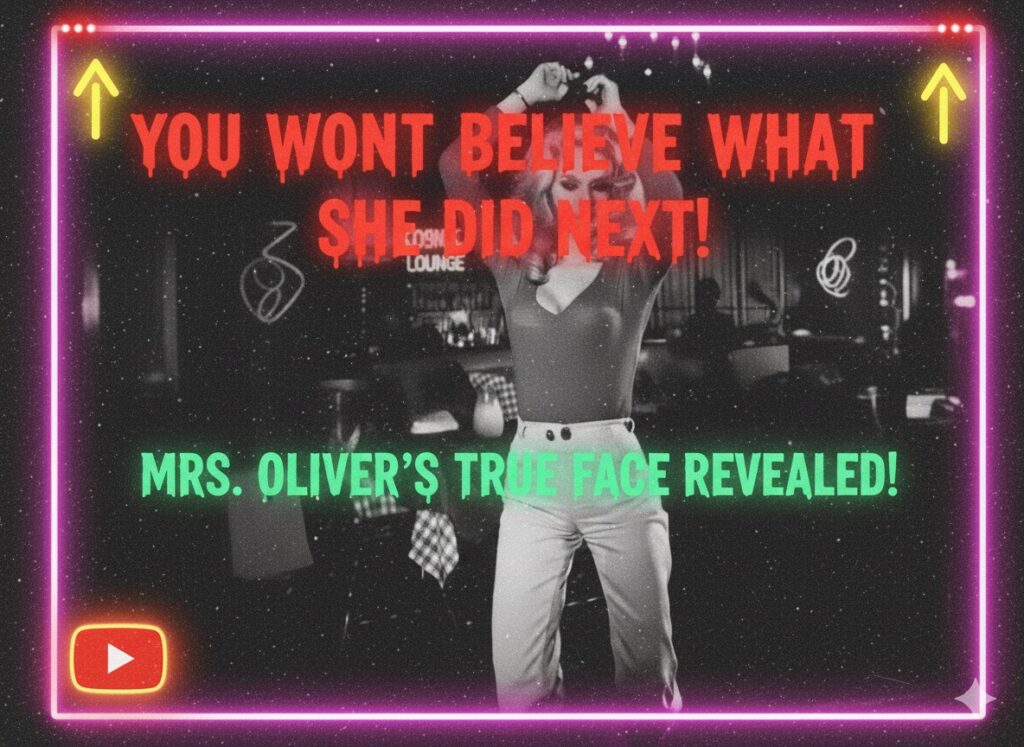“The Possession of Mrs. Oliver” sells itself as a horror film, but beneath the jump scares and smoky exorcism talk sits something colder: a study in identity theft by appetite. Call it demonic influence if you need the ritual; call it dissociative fracture if you prefer the clinical. Either way, the outcome is identical—possession isn’t just a spirit in the room; it’s a new author in your bones.
The Slow Edit of a Life
We meet Sandy as a quiet woman with the kind of small, careful life that disappears into schedules: a marriage she doesn’t want, a baby she refuses to script into existence, a personality calibrated to offend no one and satisfy nothing. Then the edits begin—first as whispers, then as whole scenes swapped out. She buys a long, blonde wig and clothes that sculpt her into someone else’s gaze. She purchases a house by the ocean as if shoreline can rinse a conscience. Nights bloom into neon: bars, dancing, new friends who know nothing about the old Sandy, and that’s the point.
This is how the film does its best work: not with crucifixes and Latin, but with receipts. The demon doesn’t roar; it shops. It curates a version of Sandy designed to execute its desires—desires Sandy can feel physically, like ache turning to command. And every acquisition, every new routine, is another stitch cut from the life she used to wear.

Doppelgängers and the Dead
People start saying the quiet thing out loud: Sandy looks and acts like a woman they knew—someone already dead. The movie never lets you fully confirm whether this resemblance is coincidence, cosmic drift, or a true walk-in. Instead, it weaponizes the social terror of recognition: strangers greet her like an echo; friends stare as if they’ve seen a ghost climb into familiar skin. When Sandy’s new persona takes the wheel, she blacks out. Mornings are crime scenes without bodies, just the forensic artifacts of who she was last night—lipstick she never wears, cash she never withdrew, sand in the sheets from a house she barely remembers buying.
Desire as an Occupation
What reads as “freedom” at first—dancing, flirting, refusing the script of wife and mother—curdles into something predatory. The fallen angel doesn’t liberate Sandy; it leases her. The camera lingers on small betrayals of agency: a hand ordering a drink before the face knows it’s thirsty, a dance step that looks practiced in someone else’s mirror, a smile that isn’t for anyone in the room. We’re watching consent get counterfeited in real time.
Fire, Knives, and Narrow Escapes
Horror needs heat, and the film obliges. A fire blooms around Sandy at the moment she seems most hollowed—an almost-funeral she barely survives. Later, a predator at her favorite bar stalks her through the neon haze. The demon saves her, in a way, but only because it needs its vessel intact. Survival here isn’t a triumph; it’s maintenance. The body must be preserved so the tenant can keep paying rent in hunger.
The Marriage Plot, Rewritten in Blood
A quieter cruelty runs underneath: the disintegration of Sandy’s marriage. She doesn’t want her husband or a child; the film refuses to punish her for that outright, but the possession twists her refusal into an indictment anyway. Is the demon exploiting her autonomy or exposing it? The answer is ugly—both. In this reading, the “unclean thing” isn’t lust or nightlife; it’s the story that a woman’s body is common property. When she says “no,” something else says “I’ll take it from here.”
Verdict
“The Possession of Mrs. Oliver” works because it keeps its claws in the mundane. It knows that true horror isn’t a monster in the attic—it’s a stranger using your mouth to say yes. By the final reel, Sandy is a house with the lights on and a new name on the deed. Whether you believe in devils or diagnoses, the film’s thesis is bleak and convincing: identity is only ever on loan, and something is always waiting to collect.